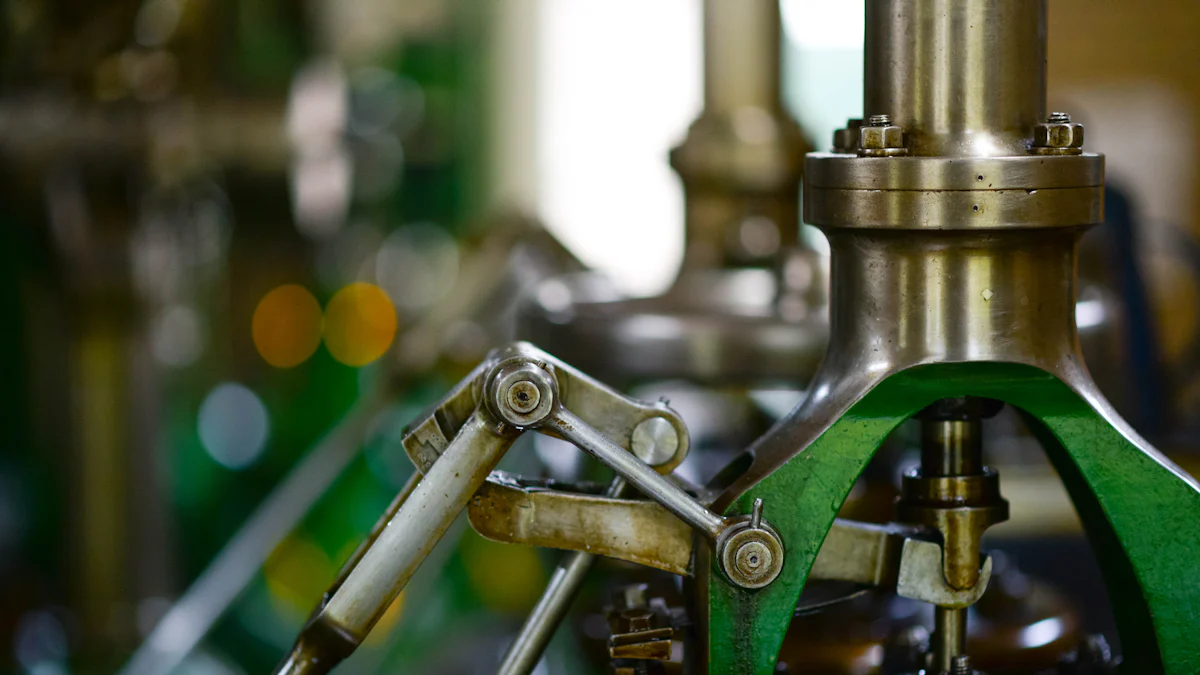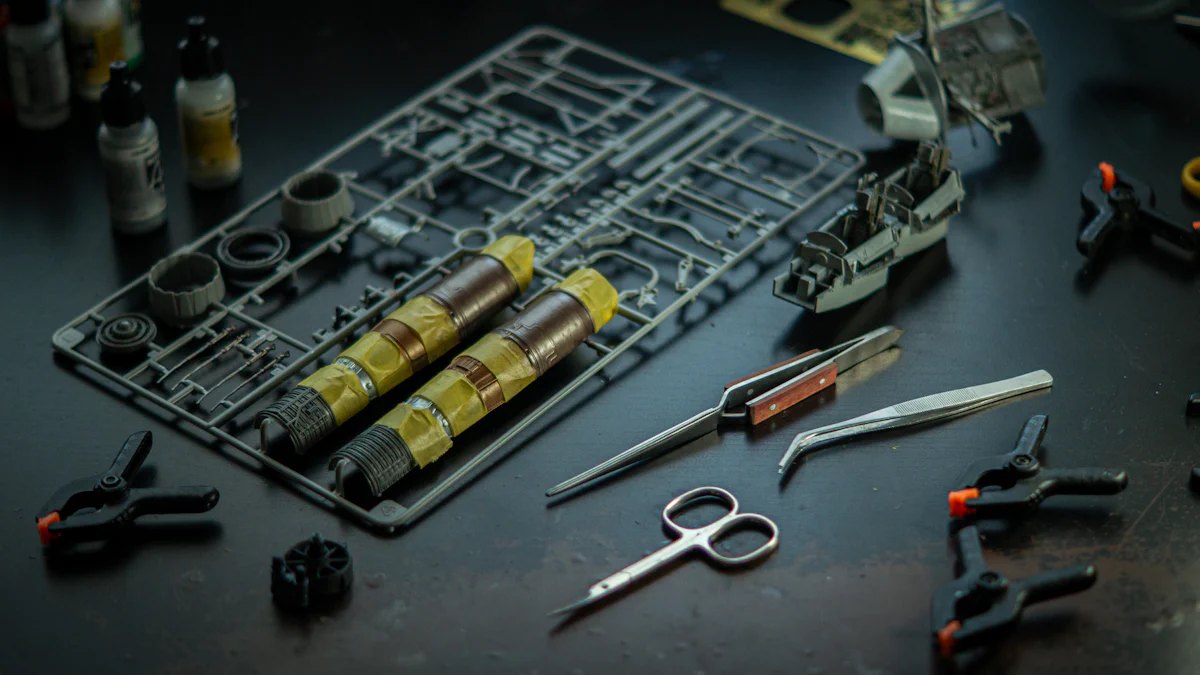
Metal Injection Molding (MIM) revolutionizes manufacturing by enabling value-added part consolidation with metal injection molding, allowing for the integration of multiple components into a single, net-shape molded part. This process not only enhances product design but also offers significant benefits in terms of cost efficiency. By consolidating components, MIM reduces production costs through minimal material waste and lower labor expenses. The streamlined process shortens lead times and simplifies supply chain management. Despite higher initial tooling costs, MIM provides overall savings with per-unit cost reduction and design flexibility. This innovative approach ensures improved functionality and performance, making it a preferred choice for industries seeking efficiency and cost-effectiveness.
Key Takeaways
- Metal Injection Molding (MIM) streamlines manufacturing by consolidating multiple components into a single part, reducing assembly time and labor costs.
- MIM enhances product reliability and performance by eliminating joints and seams, which minimizes potential points of failure.
- Cost savings are significant with MIM, as it reduces material waste and eliminates secondary operations, leading to lower production and maintenance costs.
- The flexibility of MIM allows for innovative designs and complex geometries, providing a competitive edge in various industries.
- MIM is particularly beneficial in high-volume production, offering per-unit cost reductions despite higher initial tooling costs.
- Industries such as automotive, medical devices, and consumer electronics can greatly benefit from MIM’s efficiency and functionality improvements.
- Embracing MIM can lead to enhanced product design, improved manufacturing processes, and a stronger market position.
Benefits of Part Consolidation with Metal Injection Molding
Streamlined Manufacturing Processes
Metal Injection Molding (MIM) offers a transformative approach to manufacturing by streamlining processes. I have observed that MIM significantly reduces assembly time and labor costs. By consolidating multiple components into a single part, MIM eliminates the need for complex assembly operations. This reduction in assembly time translates to lower labor expenses, making it a cost-effective solution for high-volume production.
Moreover, MIM simplifies supply chain management. With fewer parts to manage, the supply chain becomes more efficient. This simplification reduces the risk of errors and delays, ensuring a smoother production flow. The streamlined process not only enhances operational efficiency but also contributes to overall cost savings.
Improved Functionality and Performance
In my experience, MIM enhances product functionality and performance. The consolidation of parts into a single unit improves product reliability and durability. By eliminating joints and seams, MIM reduces potential points of failure, resulting in more robust products. This improvement in reliability is crucial for industries where product performance is paramount.
Additionally, MIM opens up opportunities for innovative design features. The flexibility of the process allows for the creation of complex geometries that would be challenging with traditional methods. This capability enables designers to incorporate unique features that enhance product functionality, providing a competitive edge in the market.
Cost Savings
Cost savings represent a significant advantage of Value-Added Part Consolidation with Metal Injection Molding. MIM achieves material efficiency by minimizing waste. The process uses only the necessary amount of material, reducing scrap and lowering material costs. This efficiency is particularly beneficial for high-volume production, where even small savings per unit can add up to substantial cost reductions.
Furthermore, MIM lowers production and maintenance costs. The elimination of secondary operations, such as welding or machining, reduces production expenses. Additionally, the enhanced durability of MIM parts leads to lower maintenance costs over the product’s lifecycle. These cost savings make MIM an attractive option for industries seeking to optimize their manufacturing processes.
Real-World Applications of Metal Injection Molding

Automotive Industry
In the automotive industry, Metal Injection Molding (MIM) plays a crucial role in part consolidation, particularly in engine components. I have seen how MIM allows for the integration of multiple parts into a single, cohesive unit. This integration not only reduces the number of individual components but also enhances the overall performance of the engine. By consolidating parts, MIM contributes to improved fuel efficiency and reduced emissions, which are critical factors in modern automotive design.
Moreover, MIM impacts vehicle manufacturing efficiency. The process minimizes the need for additional assembly steps, thereby reducing production time and labor costs. This efficiency translates into cost savings for manufacturers, making MIM an attractive option for producing high-quality automotive components.
Medical Devices
The medical device sector benefits significantly from MIM, especially in the production of surgical instruments. I have observed that MIM enables the creation of intricate and precise components that are essential for medical applications. For instance, surgical instruments manufactured through MIM exhibit exceptional mechanical properties, ensuring reliability and durability during medical procedures.
Case studies highlight the advantages of MIM in enhancing patient safety and device functionality. The biocompatibility of MIM materials makes them suitable for medical applications, reducing the risk of adverse reactions. Additionally, the ability to produce complex geometries allows for innovative designs that improve the functionality of medical devices, ultimately benefiting patient outcomes.
Consumer Electronics
In the realm of consumer electronics, MIM facilitates the integration of multiple functions into single components. I have noticed that this capability is particularly valuable in the miniaturization of electronic devices. By consolidating parts, MIM enables the production of compact and lightweight components, which are essential for modern electronic gadgets.
The influence of MIM on product miniaturization extends to cost-effectiveness. The process reduces material waste and simplifies assembly, leading to lower production costs. As a result, manufacturers can offer high-quality electronic products at competitive prices, meeting consumer demands for affordable and efficient technology.
Technical Aspects of Metal Injection Molding
Design Considerations
Design plays a pivotal role in the success of Metal Injection Molding (MIM). I have found that focusing on design for manufacturability ensures that the process runs smoothly and efficiently. This approach involves considering how the design will affect the manufacturing process from the outset. By doing so, I can minimize potential issues and optimize the production workflow.
One of the challenges I often encounter is dealing with complex geometries. MIM excels in creating intricate shapes, but these complexities can pose difficulties. To overcome these challenges, I employ innovative solutions such as advanced simulation tools and collaborative design efforts. These strategies help me address potential issues before they arise, ensuring a seamless manufacturing process.
Material Selection
Selecting the right material is crucial in Metal Injection Molding. A broad range of metal powders is available, each offering unique properties. In my experience, choosing the appropriate material depends on several factors, including the desired strength and corrosion resistance of the final product. For instance, high-performance alloys like cobalt-chrome and titanium alloys are ideal for applications requiring exceptional durability.
Material selection also involves considering the specific requirements of the application. For example, when electromagnetic interference shielding is necessary, I opt for specialty alloys that meet these demands. By carefully evaluating the material options, I can ensure that the final product meets the required specifications and performs optimally in its intended environment.
Metal Injection Molding (MIM) offers a multitude of compelling benefits. I have seen firsthand how it transforms manufacturing with its cost-efficiency, material versatility, and design freedom. MIM stands as a manufacturing marvel, providing significant advantages across various industries. By consolidating parts, it enhances product design and manufacturing efficiency. I encourage industries to explore MIM for its potential to revolutionize production processes. Embracing MIM can lead to improved functionality, reduced costs, and a competitive edge in the market.
FAQ
What is Metal Injection Molding (MIM)?
Metal Injection Molding (MIM) combines the precision of plastic injection molding with the versatility of powder metallurgy. This process allows for the production of small, complex metal components with high precision and cost-effectiveness. MIM is ideal for industries that require intricate designs and high-volume production.
How does MIM differ from traditional manufacturing methods?
MIM stands out by integrating multiple components into a single, net-shape molded part. Unlike traditional methods that often require multiple steps and assembly, MIM streamlines the process, reducing labor costs and material waste. This efficiency makes it a preferred choice for producing complex geometries that are challenging to achieve with other methods.
What are the primary benefits of using MIM?
The primary benefits of MIM include cost savings, improved functionality, and streamlined manufacturing processes. By consolidating parts, MIM reduces assembly time and labor costs. It also enhances product reliability and opens up opportunities for innovative design features. Additionally, MIM minimizes material waste, leading to significant cost reductions.
In which industries is MIM most commonly used?
MIM finds applications in various industries, including automotive, medical devices, and consumer electronics. In the automotive sector, MIM is used for engine components, contributing to improved fuel efficiency and reduced emissions. In medical devices, MIM produces precise surgical instruments, enhancing patient safety and device functionality. In consumer electronics, MIM facilitates the miniaturization of devices by integrating multiple functions into single components.
What materials are suitable for MIM?
A broad range of metal powders is suitable for MIM, each offering unique properties. Common materials include stainless steel, titanium, and cobalt-chrome alloys. The choice of material depends on the desired strength, corrosion resistance, and specific application requirements. For instance, high-performance alloys are ideal for applications requiring exceptional durability.
How does MIM contribute to cost savings?
MIM contributes to cost savings by minimizing material waste and eliminating secondary operations like welding or machining. The process uses only the necessary amount of material, reducing scrap and lowering material costs. Additionally, the enhanced durability of MIM parts leads to lower maintenance costs over the product’s lifecycle.
What are the design considerations for MIM?
Design for manufacturability is crucial in MIM. This approach involves considering how the design will affect the manufacturing process from the outset. By focusing on design, potential issues can be minimized, and the production workflow optimized. MIM excels in creating intricate shapes, but complex geometries can pose challenges. Innovative solutions, such as advanced simulation tools, help address these challenges.
Can MIM be used for high-volume production?
Yes, MIM is particularly suited for high-volume production of small metal parts with complex geometries. Despite higher initial tooling costs, MIM provides overall savings with per-unit cost reduction and design flexibility. This makes it an attractive option for industries seeking efficiency and cost-effectiveness in large-scale manufacturing.
How does MIM enhance product functionality?
MIM enhances product functionality by consolidating parts into a single unit, improving reliability and durability. By eliminating joints and seams, MIM reduces potential points of failure, resulting in more robust products. The flexibility of the process allows for the creation of complex geometries, enabling designers to incorporate unique features that enhance product functionality.
Is MIM environmentally friendly?
MIM is environmentally friendly due to its material efficiency and waste reduction capabilities. The process uses only the necessary amount of material, minimizing scrap and reducing environmental impact. Additionally, the streamlined manufacturing process reduces energy consumption, contributing to a more sustainable production method.
